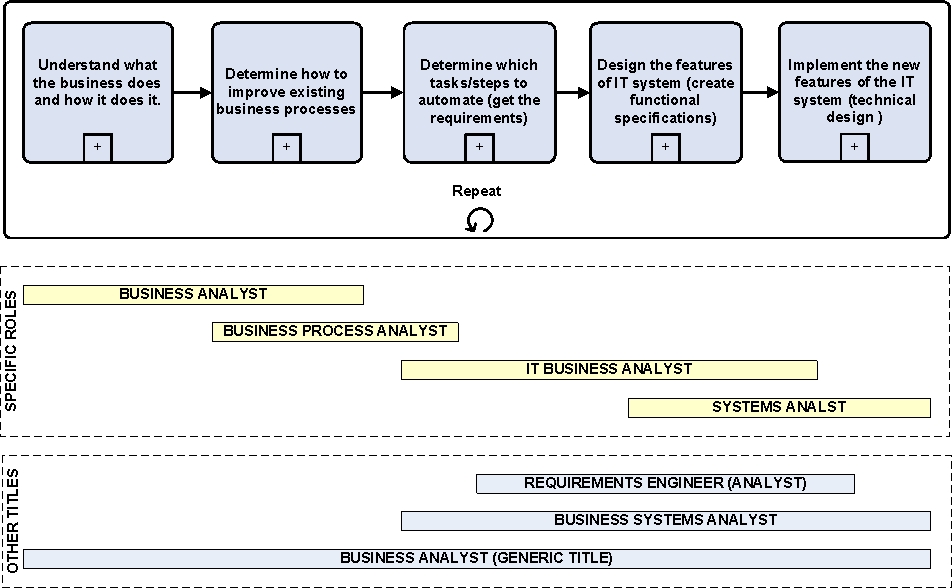What is a Business Analyst?
While business analysts are playing a pivotal role in the life of any organization, the business analysis profession is in relative infancy. What is expected of today’s analyst varies so widely from organization to organization and from project to project that it is neither possible nor practical to come up with a one-size-fits-all comprehensive description of what a business analyst does and the roles (s)he's expected to perform.
So what is a Business Analyst?
Let's start first by taking a look at what business analysis is. Here's the definition found in the IIBA's BABOK v2 draft:
“…Business analysis is the set of tasks and techniques used to work as a liaison among stakeholders in order to understand the structure, policies, and operations of an organization, and recommend solutions that enable organizations to achieve its goals…”
The first thing you should notice in the above definition is that the business analyst works in the context of an organization (not necessarily a business). The term "business" implies the ultimate goal of making money. But there are other types of organizations whose primary objective is not to make money. Such organizations include: not for profit organizations, government agencies, community groups, associations, etc. All these groups, including businesses use business analysts in the quest to achieve their respective goals.
So a better term for the business analyst would be "Organizational Analyst" as analysts are involved in identifying problems, needs, and opportunities for improvement at all levels of an organization. Now, we are not proposing to change the name by which business analysts are called but just wanted to provide you with more insight into how broad the role of the BA can be.
The second thing you should notice in the above definition is that the role of the business analyst is NOT confined to just business solutions or just IT solutions; the BA's task is to define the solution which helps the organization achieve its goals. There is a widely spread misconception among many which believe that every business analyst is involved in the development of IT systems. That is not the case! There are many business analysts who help the business improve the operational procedures, or business processes, or financial structure.
This makes it obvious, once again that the role of the BA can encompass a wide variety of responsibilities.
The following is an oversimplified diagram which shows what the business analyst might be tasks to do:

(Click image to see larger version.)
As you can see, the business analyst, depending on the organization, is expected to perform a variety of activities at various different points in time.
The reality is that there are very few people who can do it all – from cradle to gave. Most analysts are specialized and their specialization (focus) depends on the type of project, organization, skills, tools, etc.
This will probably always be a murky subject but we are beginning to see some very distinct variations in the roles (and titles) commonly associated with business analysis.
Here they are:
* Business Analyst
* Business Architect
* Business Process Analyst
* IT Business Analyst
* Systems Analyst
* Data Analyst
* Usability/UX Analyst
Here are a couple of more titles which are often used in the industry and how they relate to the above roles:
* Business Systems Analyst – This term is often used to refer to the analysis professional who’s responsibilities start with requirements gathering and end with functional/technical specs. For the most part “Business Systems Analyst” = “IT Business Analyst” + “Systems Analyst”.
* Requirements Engineer (Requirements Analyst) – This term is often used interchangeably with the IT Business Analyst though many people see this role as being limited to requirements gathering and documentation. The reality is that there are no industry standards for the scope of the requirements engineer. From experience, this term refers to a role that sits somewhere in between the IT business analyst and systems analyst.
Here is a graphical view of these roles and titles:

(Click image to see larger version.)
Again – the reality is that most organizations just give the BA any title they can come up with in a jiffy while the actual expectations can indeed very from project to project and team to team.
We invite you to provide your comments and views on this specific content and on the roles and titles for the Business Analyst.
We welcome your feedback!